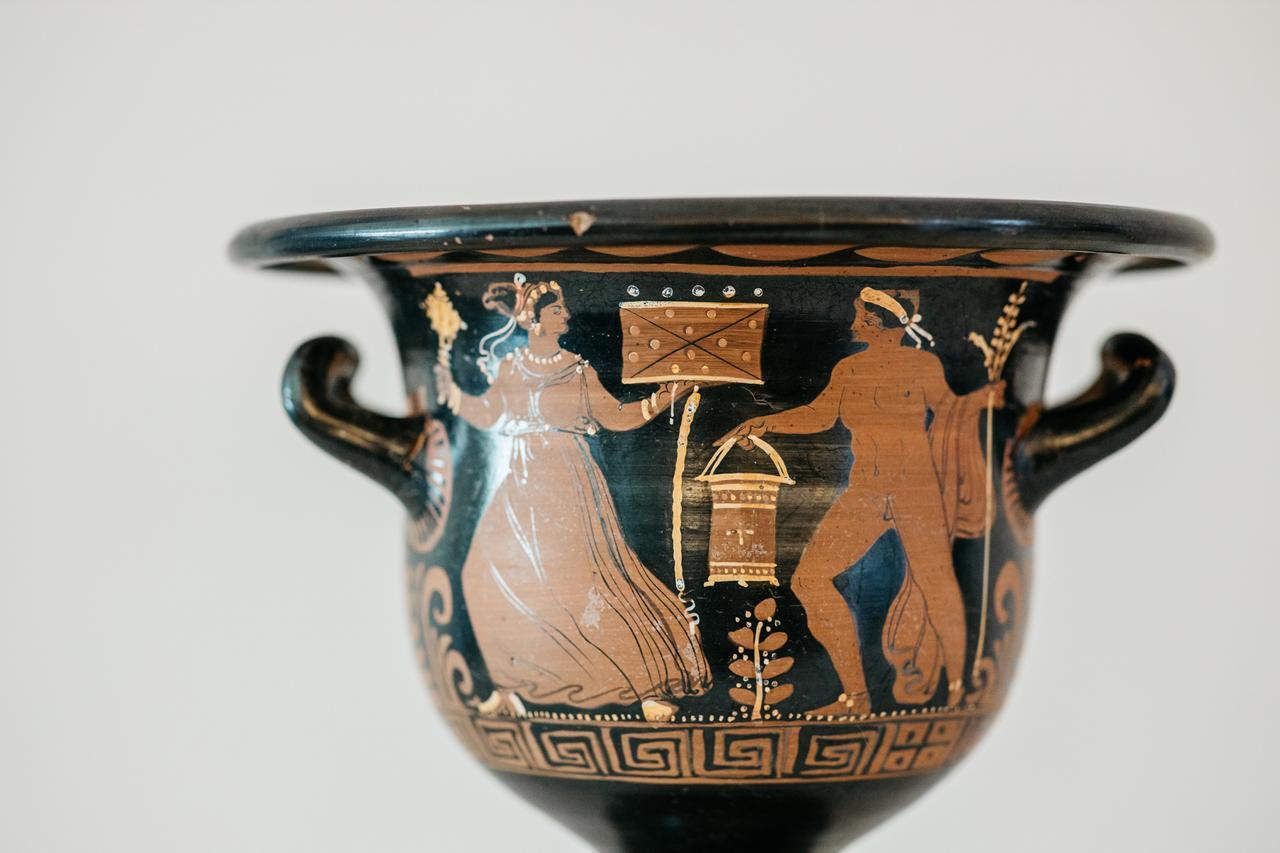Nr. 98095012

Fenicisch Glas Kralenketting. 49 cm lang. Fenicisch 600 - 400 v.Chr.
Nr. 98095012

Fenicisch Glas Kralenketting. 49 cm lang. Fenicisch 600 - 400 v.Chr.
Beads necklace
- very big and nice -
600 - 400 BC
Glass
49 cm long
Condition: Very Good state, see photos. Mounted on modern thread and fasteners.
Provenance: Ex. Private collection, R. P. (1928 - 2013), Barcleona, formed bettween 1950 - 1990. [old inventory number 3773] Thence by descent.
A Phoenician necklace with beads with linear decoration and eyes in vitreous paste is a jewel that encapsulates the artistic sophistication and symbolic beliefs of the Phoenicians.
The eye beads, known as “glass eyes”, are interspersed throughout the necklace and served as protective amulets against the evil eye, a widespread belief in antiquity.
This type of necklace was not only a fashion accessory, but also an object of protection and status, reflecting the wealth and cultural connection of the Phoenicians with other Mediterranean peoples. The combination of aesthetics and symbolism in these pieces highlights the ability of the Phoenicians to create objects that were both beautiful and functional in their beliefs and daily practices.
Phoenician glass bead necklaces are a testament to the technical skill and artistic creativity of this ancient civilization, known for its mastery in glass manufacturing. These necklaces, dating back to the first millennium BC, were made with glass beads of various colors, shapes and sizes, displaying a vibrant and detailed design.
The beads often included symbolic motifs, such as human faces or deities, protective eyes (the “eye of Horus”) and geometric patterns. These decorations served not only an aesthetic purpose, but also a protective one, serving as amulets against the evil eye and other spiritual dangers.
The manufacture of these beads employed advanced techniques, such as hot glass rolling and molding, along with the use of mineral pigments to create brilliant colors. The Phoenicians, great traders, spread this jewelry throughout the Mediterranean, taking them to regions such as Egypt, Greece and the Iberian Peninsula, where they became objects of prestige and evidence of cultural exchange in antiquity.
Note:
- According to Spanish legislation, items sent outside the European Union are subject to export taxes and will be added to the invoice, at the buyer's expense. These export fees are fixed on the final auction price and the tax rate is not applied directly on the total value of the item to be exported, but rather the different percentages by sections are applied to it:
- Up to 6,000 euros: 5%.
- From 6,001 to 60,000 euros: 10%.
This export permit application process can take between 1-2 months maximum.
Vergelijkbare objecten
-
-
-
-
-
-
-
-
-
-
Dit object was te vinden in
Zo koop je op Catawiki
1. Ontdek iets bijzonders
2. Plaats het hoogste bod
3. Veilig betalen

